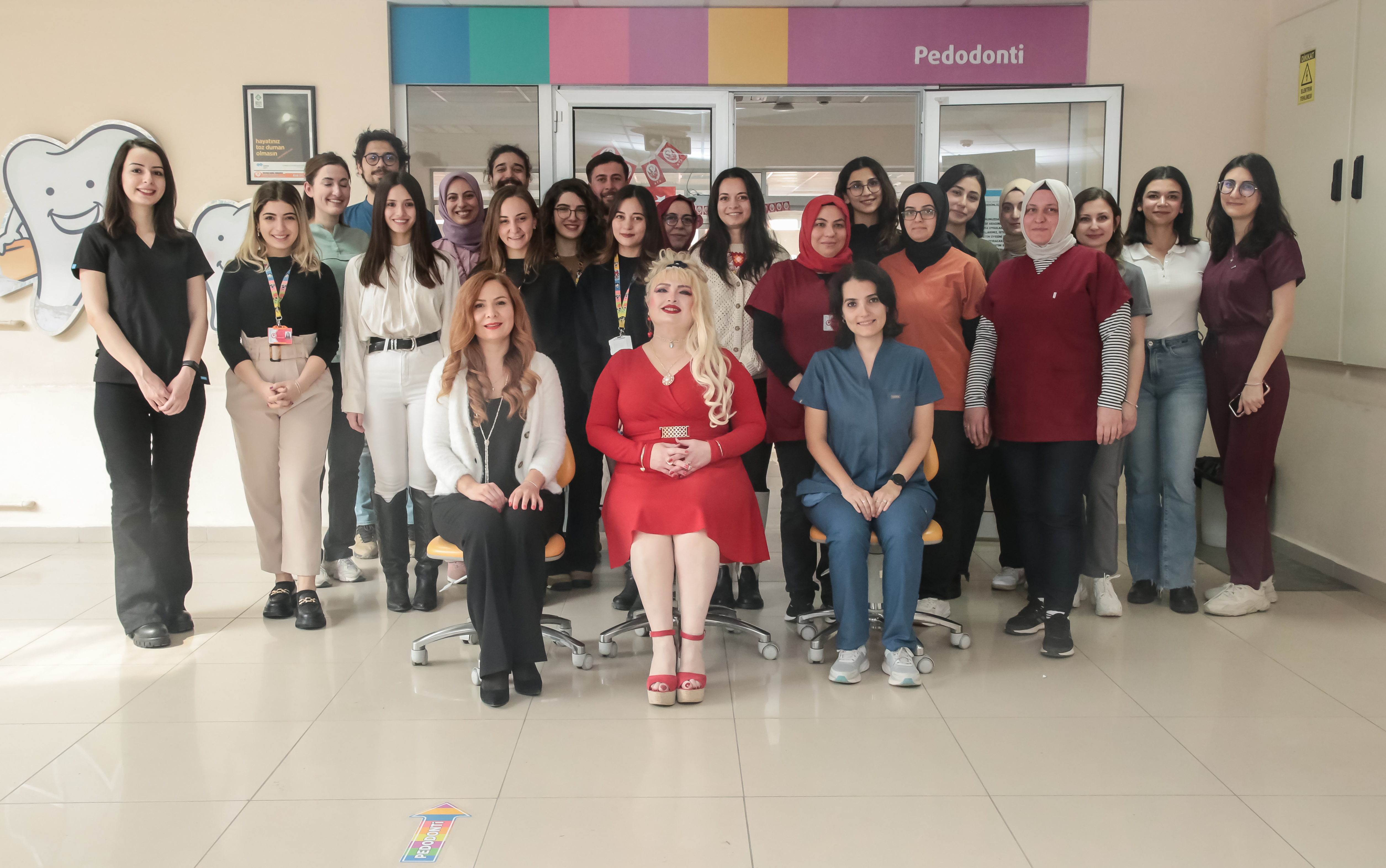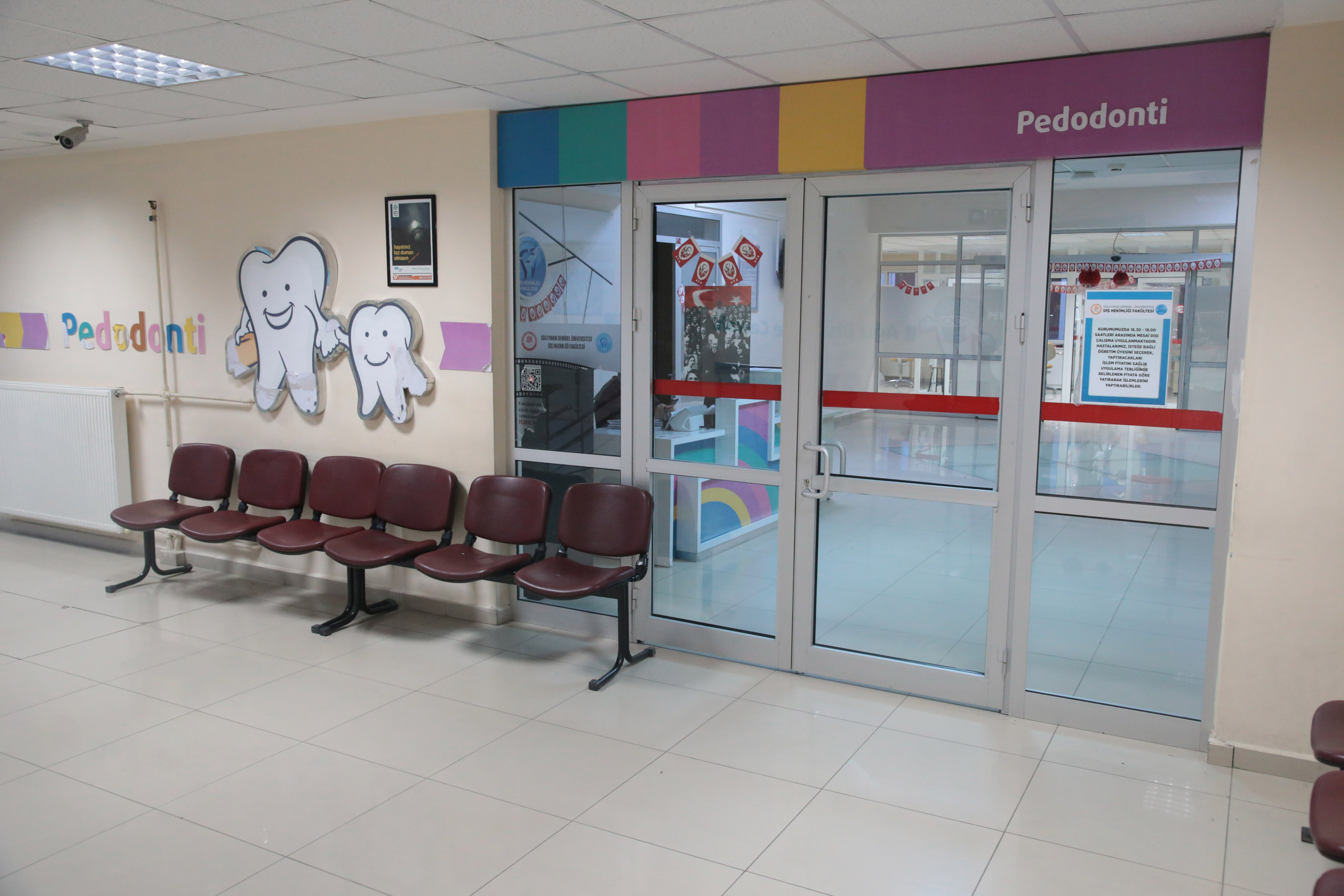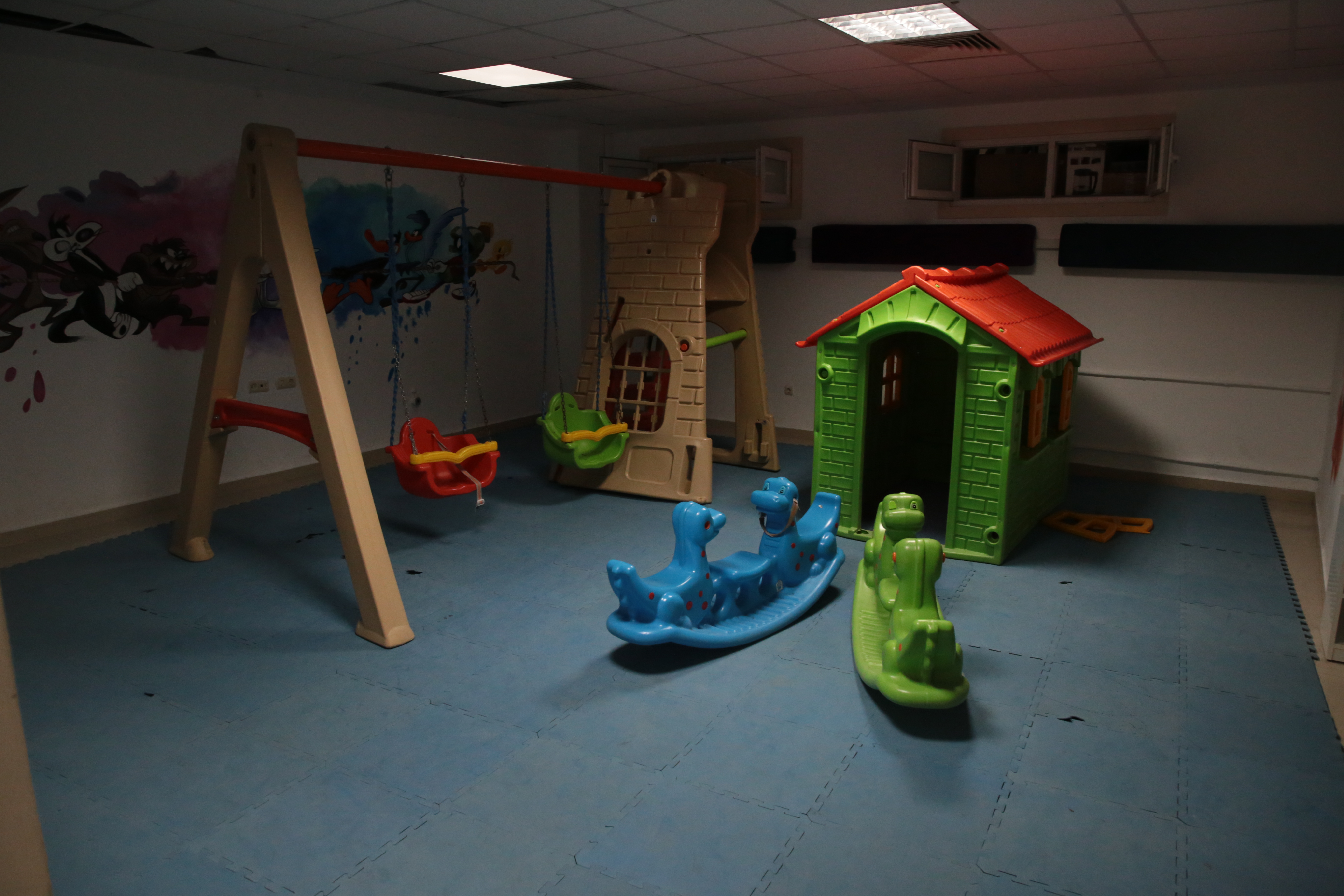Pedodontics
|
Chair Academic Staff
Communication (0246) 211 33 49 |
HISTORY Department of Pedodontics doctorate program, in 1999, was founded by Prof. Dr. Zuhal KIRZIOĞLU. There are 3 faculty members and 15 research assistants in our department. Our clinic has trained a lot of pedodontists to date.
LOCATION and CAPACITY Our department has 4 clinics (faculty member clinic, specialist physician clinic, physician clinic, examination clinic).
RESEARCH ASSISTANT EDUCATION PROCESS The duration of doctorate education is at least 4 years and intensive practical applications are made in addition to theoretical courses. The education period of speciality (post graduate)students is 3 years, and during this education period, rotations are made in the departments of Orthodontics, Oral and Maxillofacial Surgery, Medical Biology and Genetics, Pediatrics, Anesthesiology and Reanimation.
DEPARTMENT OF STUDY AREAS Preventive dentistry applications (Fluoride, Fissure sealant, Diet analysis, Prevention approaches for tooth decay etc.) Preventive dentistry practices (Dental traumas, Dental anomalies etc.) Restorative dentistry applications (Cavities, Restorations, Materials etc.) Oral care for children with disabilities
TREATMENTS PERFORMED by OUR DEPARTMENT Fluoride Application: Fluoride is an element that prevents tooth decay by protecting tooth enamel against acids and increases its durability by entering the structure of the tooth during its formation. It is used to prevent dental caries and to help relieve sensitivity in patients with sensitivity problems. Fissure Sealant: Deep grooves on the chewing surfaces of the teeth are areas that are difficult to clean and prone to caries. These areas are covered with transparent, colored or white fissure sealants to prevent caries formation. Compomer and Composite Fillings: The existing caries on the teeth are completely cleaned using rotating and/or hand tools, if necessary, and the necessary base materials are applied. Compomer fillings that can release fluoride and are suitable for the deciduous tooth structure, available in tooth color or in different color options are applied in the treatment of deciduous teeth. In the treatment of permanent teeth, composite filling materials in tooth color and suitable for permanent tooth structure are applied. Polishing of the filling material is made at the end. Pulpotomy: In teeth with deep caries or broken due to trauma, after removal of the decayed and weakened tooth structures by anesthetizing if necessary, partial or complete removal of the infected pulp and nerve tissue in the crown is applied. The remaining tooth tissues are covered with special filling materials and after that final filling materials are applied on them. Root Canal Treatment: The existing caries in the teeth are completely cleaned by using rotating and/or hand tools, if necessary, the part of the tooth containing veins and nerves is completely removed, and the required number of dressings is applied to the canals. The canals are filled with canal filling materials. After the canal filling is completed, appropriate filling materials for the crown or prosthetic crowns are applied. Space Maintainer and Child Prostheses When primary teeth are lost early due to caries or trauma, a space maintainer should be made to protect the place where the permanent tooth will erupt. In order for your child to have a proper set of teeth in later ages, the permanent teeth space must be protected. Space maintainers are prepared by dental technicians by using impression ,which is taken by the dentist, of the teeth and jaws of children. They can be prepared as fixed or removable according to the tooth development of children and the number of missing teeth. They should remain in the mouth until the permanent tooth under the extracted primary tooth erupts. Child prostheses are a modified form of adult prostheses and are made when teeth are lost for any reason and enable the child to perform aesthetic, speaking and chewing functions.
MOST ASKED QUESTIONS AND ANSWERS BY PATIENTS 1) Should primary teeth be treated? Primary teeth guide the permanent teeth that will erupt. The healthier the primary teeth, the healthier the permanent teeth. In order to growth and development completed in a healthy way, primary teeth must be treated. Untreated teeth become the focus of infection and can be harmful for our children. 2) Should I clean my baby's first teeth? The cleaning process should begin when the first teeth of babies appear in the mouth. After feeding, the surfaces of the teeth should be cleaned with the help of a clean cheesecloth or gauze. Cleaning can also be done with baby toothbrushes or xyliol cleaning wipes. 3) My baby's teeth are delayed in eruption. Should I be worried? In general, the first teeth in babies begin to erupt at 6-8 months of age. If your baby is 1 year old and there is no tooth in his mouth, a dentist should be consulted to investigate the cause. 4) My child fell, he crashed his teeth. What should I do? If there are pieces of teeth in the place where the child fell, they should be taken and put in a solution (cold milk) and a dentist should be consulted without wasting time. 5) How can tooth decay be prevented? Ø Teeth should be brushed at least 2 times a day for 2 minutes as recommended with a fluoridated toothpaste recommended by the physician according to the age of the child. Ø Every day, the spaces between the teeth should be cleaned with dental floss or an interface brush Ø Physician's recommendations regarding nutrition should be followed. Ø The dentist should be visited at least once every 6 months. 6) My baby was born with teeth. What should I do? Sometimes babies are born with teeth or erupt teeth right after birth. A dentist should be consulted to evaluate these teeth and determine their treatment. 7) When should I take my child to the dentist for the first time? As soon as the first tooth erupts, the dentist should be visited and information about oral care and health should be obtained. Problems with your child's teeth may begin at a very early age. It will be possible to prevent the problems that may arise in this period befo
Informed Consent Forms Amputation Informed Consent Form Apexification Informed Consent Form Bleaching Informed Consent Form Examination Informed Consent Form Fissure Sealant Informed Consent Form Retreatment Informed Consent Form Root Canal Treament Informed Consent Form Space Maintainer Informed Consent Form
|



